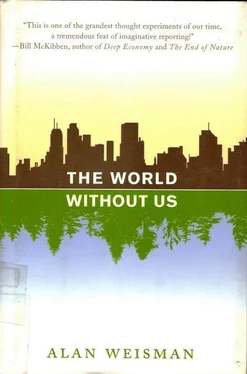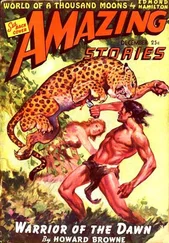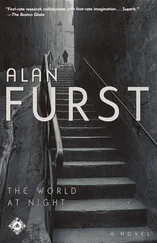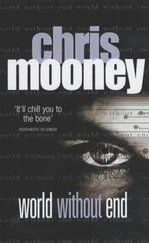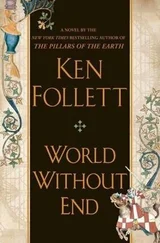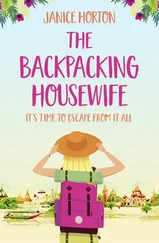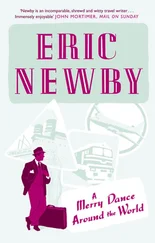Paleontologist Richard White has helped Tucson’s International Wildlife Museum, which he directs, grow into a research and educational facility—not unlike many renowned museums whose exhibits were originally big-game trophies collected by hunters. I was first taken there by the eminent paleoecologist Paul Martin, who calls it a place of reflection. My very special thanks to Paul Martin for many engrossing hours and enlightening thoughts, and for suggestions springing from his deep familiarity with the canon of scientific literature on extinctions, including many works that challenge his own theories. My final interview on this subject, with C. Vance Haynes, helped me to put all the competing scholarship into a context that reveals the collective contributions of each.
I can’t adequately express my appreciation to Jeremy Jackson and Enric Sala for inviting me to join the Scripps Institution of Oceanography’s 2005 expedition to the South Pacific’s Line Islands—and for months of conversation and education, before and after. So many scientists on that trip taught me so much that to select only a few to sketch that voyage in this book’s final chapter in no way reflects how grateful I am to all. My thanks to marine ecologist and co-principal investigator Stuart Sandin of Scripps; microbiologists Rob Edwards, Olga Pantos, and especially Forest Rohwer of San Diego State; Philippine invertebrate biologist Machel Malay; coral reef specialists David Obura of the Indian Ocean’s CORDIO program and Jim Maragos of U.S. Fish and Wildlife; ichthyologists Edward DeMartini of the National Oceanic and Atmospheric Administration and Alan Friedlander of Hawaii’s Oceanic Institute; University of California-Santa Barbara marine botanist Jennifer Smith; coral disease expert Liz Dinsdale of Australia’s James Cook University; and two Scripps graduate students en route to vital careers: Steve Smriga and Melissa Roth. My education also benefited from the presence on that voyage of Smithsonian diving safety officer Mike Lang, filmmaker Soames Summerhays, and photographer Zafer Kizilkaya. Ecologist Alex Wegman, based on Palmyra, was my helpful source for terrestrial atoll ecology. Last, thank you to Capt. Vincent Backen and his crew of the ORIV White Holly , whose skill and hospitality allowed all the science to proceed.
I owe much of my understanding of both methane clathrates and carbon sequestration to Charles Bryer, Hugh Guthrie, and Scott Klara of the National Energy and Technology Laboratory in Morgantown, West Virginia, and to David Hawkins of the National Resources Defense Council. Susan Lapis of SouthWings and Judy Bonds of the Coal River Mountain Watch showed me the ghosts of former mountains in West Virginia, and what it takes to face and fight such devastation. My thanks also to codirector Monica Moore of the Pesticide Action Network of North America for information on the health impacts of agricultural chemistry; to head scientist David Olson at the Colorado School of Mines for his help with metal-alloy longevity; and to planetary scientist Carolyn Porco of the Cassini Project for thoughts on images literally out of this world. Dr. Thomas Ksiazek, chief of the Special Pathogens Branch at the Centers for Disease Control, and Dr. Jeff Davis, Wisconsin chief medical officer and state epidemiologist for communicable diseases, brought me back to Earth with their impressive dedication to sobering work. Thanks, too, to Michael Mathews of the University of Minnesota and Michael Wilk of Wayne State University for explaining the intricacies of mortuary science, and to Michael Pazar of Wilbert Funeral Services.
Both in discussion and through his always-surprising writing, Oxford’s Nick Bostrom challenged my thinking on multiple subjects. I likewise thank Rabbis Michael Grant and Baruch Clein, Rev. Rodney Richards, Todd Strandberg of Rapture Ready, Sufi Abdülhamit Çakmut, Rev. Hyon Gak Sunim, and His Holiness the Dalai Lama for sharing their varied, thought-provoking contemplations of the Earth after us. Each professes one of the world’s great religions, but what filled my own soul most was their common humanity—a quality also shared by VHEMT’s Les U. Knight, who would bring nature’s human experiment to a close, and the Rewilding Institute’s Dave Foreman, who would keep us, but in cooperation, not conflict, with the rest of our planet’s species. I am particularly beholden to Dr. Wolfgang Lutz of the World Population Program, and his colleague Dr. Sergei Scherbov of the Vienna Institute of Demography at the Austrian Academy of Sciences, for assistance with translating a critical element of that formula into plain numbers—numbers that, quite literally, we could live with. All of us.
My grateful appreciation goes to Jacqueline Sharkey, head of the University of Arizona Journalism Department, and to the university’s Center for Latin American Studies, for encouraging me to combine my annual international journalism seminar with my research in Panama. Likewise, my Ecuador trip, where I was greatly assisted by guest producer Nancy Hand, was supported by my bosom partners at Homelands Productions, who are also my constant inspirations: Sandy Tolan, Jon Miller, and Cecilia Vaisman.
Many other friends, relations, and colleagues sustained me at key moments through the research and writing of this book, with contributions ranging from practical to intellectual, moral, and mystical (to say nothing of culinary)—all prompting ideas and bolstering my energy when I most needed them. For advice, critiques, insights, affection, faith, food, and spare bedrooms, thank you Alison Deming, Jeff Jacobson, Marnie Andrews, Drum Hadley, Rebecca West, Mary Caulkins, Karl Kister, Jim Schley, Barry Lopez, Debra Gwartney, Chuck Bowden, Mary Martha Miles, Bill Wing, Terri Windling, Bill Posnick, Pat Lanier, Constanza Vieira, Diana Hadley, Tom Miller, Ted Robbins, Barbara Ferry, Dick Kamp, Jon Hipps, Caroline Corbin, Clark Strand, Perdita Finn, Molly Wheelwright, Marvin Shaver, and Joan Kravetz, and very special thanks to my able research aide, Julie Kentnor. This list also includes some entire families: Nubar Alexanian, Rebecca Koch, and Abby Koch Alexanian; Karen, Benigno, Elias, and Alma Sánchez-Eppler; and Rochelle, Peter, Brian, and Pahoua Hoffman.
I am indebted, too, to the artists whose work graces these pages. Digital magician Markley Boyer brings data to stunning life for the Mannahatta Project. Janusz Korbel has long photographed the splendors of Poland’s Białowieża Puszcza for the same impassioned reasons that inspire Vivian Stockman to document the missing mountains of West Virginia. Archaeologist Murat Ertuğrul Giilyaz and biologist Jim Maragos each contributed images evoking their respective subsurface specialities: the underground cities of central Turkey and the Pacific coral reef. Arizona Republic photographer Tom Tingle provided an interior glimpse of a realm that few would dare enter, but one to which we are literally connected daily—the core of a nuclear generating reactor.
Peter Yates’s image of decaying Varosha, Cyprus, has special poignancy: three decades earlier, he met his wife there. Perhaps symbolically, as he snapped the picture a foreground sprig of wild grass blew in front of his lens, partly obscuring the abandoned hotel’s facade; with his assent, it was photo-surgically removed by Ronn Spencer of ’Sole Studios. Ronn and his colleague Blake Hines also expertly processed color photographs into black-and-white renditions for this book.
The reproduction of Annapolis illustrator Phyllis Saroff’s resurrected passenger pigeon in flight doesn’t fully reflect her delicately colored original, but the gray-scale version she kindly provided has its own haunting power. And I can never thank Carl Buell enough for creating original drawings of a litoptern, a giant sloth, and of our forebear Australopithecus , for this book.
Читать дальше
